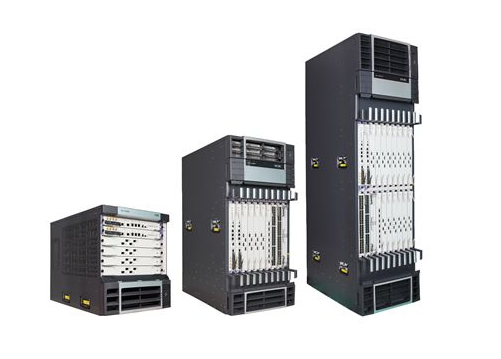A core router, also known as a "backbone router," is a router located in the center of the network. In order to meet the needs of future network development, the performance of the core router in the backbone of the Internet is very important. What performance indicators should be paid attention to when purchasing enterprises?
This article refers to the address: http://
The system switching capability and processing capability of high-speed routers are an important manifestation of their ability to differ from general routers. At present, the backplane switching capability of high-speed routers should reach 40 Gbps or more. At the same time, even if the system does not provide OC-192/STM-64 interfaces for a while, it must support the interface in the future without upgrading existing interface cards and common components. In terms of device processing power, when the system is running at full capacity, all interfaces should be able to process short packets at line rate, such as 40 bytes, 64 bytes. At the same time, the switching matrix of the high-speed router should be able to process all the lines at a line rate without blocking. The exchange of interfaces is independent of the type of traffic.
One of the indicators: throughput
Throughput is the packet forwarding capability of the core router. Throughput is related to the number of router ports, port rate, packet length, packet type, route calculation mode (distribution or concentration), and test method. It generally refers to the processor's ability to process packets. High-speed routers have a packet forwarding capability of at least 20 Mpps. Throughput mainly includes two aspects:
1. Machine throughput
The whole machine refers to the packet forwarding capability of the whole device, which is an important indicator of device performance. The job of the router is to route the path according to the IP header or MPLS label, so the performance indicator refers to the number of packets forwarded per second. The overall throughput is usually less than the sum of the throughput of all ports on the core router.
2. Port throughput
Port throughput refers to the port packet forwarding capability, which is the packet forwarding capability of the core router on a certain port. Two identical rate test interfaces are typically used. The general test interface may be related to the interface location and relationship. For example, the throughput tested between ports on the same card may be different from the throughput value between ports on different cards.
Indicator 2: Routing Table Capability
Routers typically rely on established and maintained routing tables to determine packet forwarding. The routing table capability refers to the limit of the number of routing entries in the routing table. Since the core routers that implement BGP on the Internet usually have hundreds of thousands of routing entries, this project is also an important manifestation of router capabilities. In general, a high-speed core router should be able to support at least 250,000 routes, providing an average of at least 2 paths per destination address. The system must support at least 25 BGP peers and at least 50 IGP neighbors.
Indicator 3: Backplane capability
The backplane refers to the physical path between the input and output ports. The backplane capability is the internal implementation of the core router. The traditional core router adopts the shared backplane, but as a high-performance router, it will inevitably encounter congestion problems. Secondly, it is difficult to design a high-speed shared bus. Therefore, the existing high-speed core router is generally adopted. The design of the interchangeable backplane. Backplane capability can be reflected in router throughput, and backplane capability is typically greater than the value calculated based on throughput and test packet length. However, the backplane capability can only be reflected in the design and generally cannot be tested.
Indicator 4: Packet Loss Rate
The packet loss rate refers to the proportion of packets that cannot be forwarded by the core router due to lack of resources in the packets that should be forwarded under a stable continuous load. The packet loss rate is often used to measure the performance of the core router when the router is overloaded. The packet loss rate is related to the packet length and the packet transmission frequency. In some environments, route jitter or a large number of routes can be added for test simulation.
Indicator 5: Delay
The delay is the time interval between the first bit of the packet entering the router and the last bit being output from the core router. This time interval is the processing time of the core router working in the store-and-forward mode. Latency is related to both packet length and link rate and is typically tested within the router port throughput range. The delay has a great impact on the network performance. As a high-speed router, in the worst case, the IP packet delay of 1518 bytes and below is required to be less than 1 ms.
Indicator 6: Back-to-back frames
The number of back-to-back frames refers to the number of packets when the maximum packet is sent at the minimum frame interval without causing packet loss. This metric is used to test core router caching capabilities. A core router with wire-speed full-duplex forwarding capability, the indicator value is infinite.
Indicator 7: Delay jitter
Delay jitter is the change in delay. Data services are not sensitive to delay jitter, so this indicator is usually not an important indicator for measuring high-speed core routers. For other services except IP, such as voice and video services, this indicator has the necessity of testing.

Capacitor Motor,Furnace Capacitor,Start Capacitor,Capacitor Start Motor
Wentelon Micro-Motor Co.,Ltd. , https://www.wentelon.com